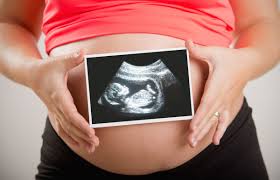Washington, Jul 18: Language learning begins in the womb, say scientists who have found that babies can distinguish between someone speaking to them in English and Japanese a month before they are born.
Previous studies have demonstrated this by measuring changes in babies' behaviour - for example, by measuring whether babies change the rate of sucking on a pacifier when the speech changes from one language to a different language with different rhythmic properties.
"This early discrimination led us to wonder when children's sensitivity to the rhythmic properties of language emerges, including whether it may in fact emerge before birth," said Utako Minai, associate professor at University of Kansas in the US.
"Foetuses can hear things, including speech, in the womb. It's muffled but the rhythm of the language should be preserved and available for the foetus to hear, even though the speech is muffled," he said.
Two dozen women, averaging roughly eight months pregnant, were examined using magnetocardiogram (MCG).
"It (MCG) fits over the maternal abdomen and detects tiny magnetic fields that surround electrical currents from the maternal and foetal bodies," said Kathleen Gustafson, research associate professor at University of Kansas.
That includes heartbeats, breathing and other body movements.
"The foetal brain is developing rapidly and forming networks. The foetus is exposed to maternal gut sounds, her heartbeats and voice, as well as external sounds," Gustafson said. "Without exposure to sound, the auditory cortex wouldn't get enough stimulation to develop properly. This study gives evidence that some of that development is linked to language," she added.
Researchers had a bilingual speaker make two recordings, one each in English and Japanese, to be played in succession to the foetus. English and Japanese are argued to be rhythmically distinctive.
English speech has a dynamic rhythmic structure resembling Morse code signals, while Japanese has a more regular-paced rhythmic structure.
The foetal heart rates changed when they heard the unfamiliar, rhythmically distinct language (Japanese) after having heard a passage of English speech, while their heart rates did not change when they were presented with a second passage of English instead of a passage in Japanese.
"These results suggest that language development may indeed start in utero. Foetuses are tuning their ears to the language they are going to acquire even before they are born, based on the speech signals available to them in utero," said Minai.
"Pre-natal sensitivity to the rhythmic properties of language may provide children with one of the very first building blocks in acquiring language," he said. The research was published in the journal NeuroReport.





Comments
Add new comment